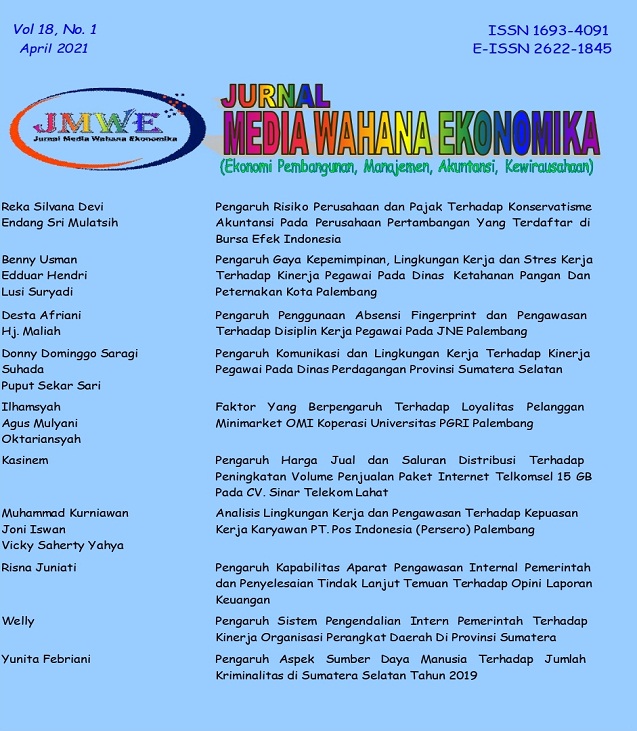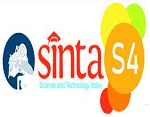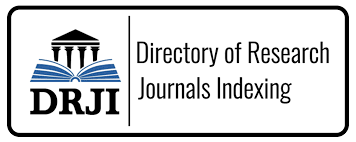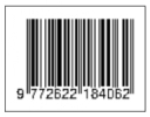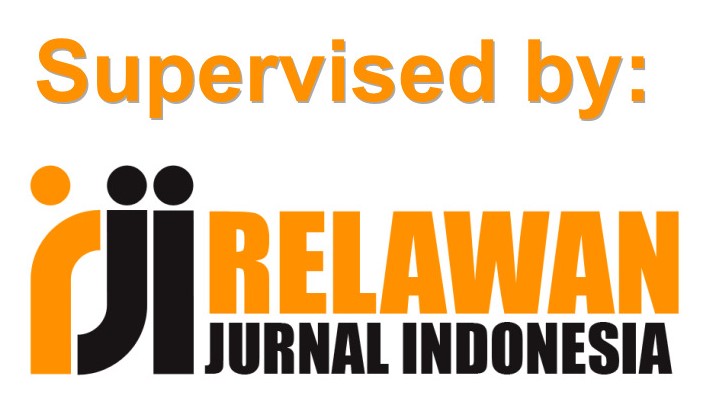Pengaruh Gaya Kepemimpinan, Lingkungan Kerja dan Stres Kerja Terhadap Kinerja Pegawai Pada Dinas Ketahanan Pangan Dan Peternakan Kota Palembang
DOI:
https://doi.org/10.31851/jmwe.v18i1.5574Abstract
ABSTRAK
Â
Penelitian ini bertujuan untuk mengetahui dan menguji ada atau tidaknya pengaruh Gaya Kepemimpinan, Lingkungan Kerja Dan Stres Kerja Terhadap Kinerja Pegawai Pada Dinas Ketahanan Pangan Dan Peternakan Kota Palembang. Teknik pengumpulan data dalam penelitian ini melalui wawancara dan Penyebaran Kusioner. Sampel yang digunakan dalam penelitian ini menggunakan teknik Probabilitas Sampling sehingga diperoleh sampel sebanyak 51 pegawai. Teknik analisis data menggunakan uji asumsi klasik, analisis regresi liniar berganda, koefisien determinasi, pengujian hipotesis uji T dan uji F. Hasil penelitian ini dapat diketahui bahwa nilai persamaan regresi linear berganda Y = 4,849 + 0,361X1 + 0,686 X2 – 0,202 X3. Hasil koefisien determinasi menunjukkan nilai R Square sebesar 0,837 artinya pengaruh variabel-variabel bebas (Gaya Kepemimpinan X1, Lingkungan KerjaX2 dan Stres Kerja X3) terhadap variabel terikat (Kinerja Pegawai) sebesar 83,7% sedangkan sisanya 17,3% dipengaruhi oleh variabel yang lain yang tidak diteliti didalam penelitian. Hasil pengujian hipotesis uji T Gaya Kepemimpinan X1 terhadap kinerja pegawai (Y) diperoleh nilai signifikan 0,000 > 0,05 maka dapat disimpulkan secara parsial ada pengaruh yang signifikan terhadap kinerja pegawai. Hasil pengujian hipotesis uji t Lingkungan KerjaX2  terhadap kinerja pegawai (Y) diperoleh nilai signifikan 0,000 < 0,05 maka disimpulkan secara parsial ada pengaruh signifikan terhadap Kinerja Pegawai. Hasil pengujian hipotesis uji t Stres Kerja X3 terhadap terhadap kinerja pegawai (Y) diperoleh nilai signifikan 0,008 < 0,05 maka dapat disimpulkan bahwa stres kerja berpengaruh signifikan terhadap Kinerja Pegawai. Hasil pengujian hipotesis uji F diperoleh nilai signifikan 0,000 < 0,05 maka Ho ditolak dan Ha diterima, maka dapat disimpulkan bahwa (Gaya Kepemimpinan X1, Lingkungan KerjaX2 dan Stres Kerja X3)secara bersama-sama  ada pengaruh yang signifikan terdapat Kinerja Pegawai (Y) Dinas Ketahanan Pangan dan Peternakan Kota Palembang.
Â
Kata Kunci: Gaya Kepemimpinan, Lingkungan Kerja, Stres Kerja, Kinerja Pegawai
Â
Â
ABSTRACT
Â
This research aims to know and test whether or not the influence of leadership style, working environment and occupational stress to the performance of employees at the Department of Food Security and livestock in Palembang. Data collection techniques in this study through interviews and dissemination of Kusioner. The samples used in this study were using probability Sampling techniques so that samples were obtained by 51 employees. Data analysis techniques using classical assumption tests, multiple liniar regression analyses, coefficient of determination, T test hypothesis testing and F test. The results of this study can be noted that the value of double linear regression equation Y = 4.849 + 0, 361X1 + 0.686 X2 – 0.202 X3. The result of the coefficient of determination indicates that the R Square value of 0.837 means that the influence of free variables (the X1 leadership style, the work environment X2 and the work stress X3) of the bound variable (employee performance) amounted to 83.7% while the remaining 17.3% is influenced by other variables not examined in the study. The test result of the T-style leadership test hypothesis X1 on the employee's performance (Y) obtained a significant value 0.000 > 0.05 can be deduced in partial there is a significant influence on the employee's performance. Testing results of T-Test hypothesis X2 work environment on personnel performance (Y) obtained a significant value of 0.000 < 0.05 then concluded partially there is a significant influence on the employee's performance. Testing results of T test hypothesis the work stress X3 against the employees ' performance (Y) obtained a significant value of 0.008 < 0.05 then it can be concluded that the work stress has significant effect on the employee's performance. Test results of the F testing hypothesis obtained a significant value of 0.000 < 0.05 then Ho rejected and Ha accepted, it can be concluded that (style leadership X1, working environment X2 and Work stress X3) jointly there is a significant influence there is the personnel performance (Y) Department of Food Security and livestock farming Palembang.
Â
Keywords: leadership style, work environment, occupational stress, employee performanceReferences
Edy, Sutrisno. (2011). Budaya Organisasi. Kencana Prenada Media Grup: Jakarta.
Hamali, A. Y. (2016). Pemahaman Sumber Daya Manusia. PT. Buku Seru: Yogyakarta.
Hasibuan, S, P. (2013). Manajemen Sumber Daya Manusia. PT. Bumi Aksara : Jakarta.
Nurhidaya, Siti. (2018). Pengaruh Lingkungan Kerja Terhadap Kinerja Karyawan (studi kasus CV. Fajar Nusantara jaya serangan. Surakarta) Skripsi Dipublikasikan. Fakultas Ekonomi Dan Bisnis Islam Institut Agama Islam Negeri Surakarta.
Oktariansyah, 2012. Pengaruh Kepemimpinan Dan Lingkungan Kerja Fisik Terhadap Motivasi Kerja Karyawan CV. Sedulur Palembang. Jurnal Media Wahana Ekonomika Vol. 9, No.2, Juli 2012 : 80 - 93
Prayatna dan Subudi. (2016). Pengaruh Gaya Kepemimpinan Terhadap Stres Kerja dan Kepuasan Kerja Karyawan Pada Fave Hotel Seminyak. Ejurnal.Manajemen Unud. Vol. 5 No.2 halaman 845.
Rahmi, Sari. Dkk. (2012). Pengaruh Kepemimpinan Dan Motivasi Stres Kerja Terhadap Kinerja Karyawan Pada Bank Syariah Mandiri Kantor Cabang Makasar. Jurnal Analisi. Vol. 1 No. 1 halaman 92.
Sudaryono. (2017). Pengantar Manajemen Teori Dan Kasus. PT. Buku seru: Yogyakarta.
Sugiyono. (2018). Metode Penelitian Manajemen. Alfabeta : Bandung
Sujarweni, V. Wiratna. (2019). Metodelogi Penelitian Bisnis & Ekonomi. Pustaka Baru Press : Yogyakarta.
Wibowo. (2016). Manajemen Kinerja. PT. Raja Grapindo Persada : Jakarta
Downloads
Published
Issue
Section
License
The copyright of the received article shall be assigned to the publisher of the journal licensed under a Creative Commons Attribution-NonCommercial 4.0 International License in line with the license, authors and any users (readers and other researchers) are allowed to share and adapt the material only for non-commercial purposes. In addition, the material must be given appropriate credit, provided with a link to the license, and indicated if changes were made. If authors remix, transform or build upon the material, authors must distribute their contributions under the same license as the original.

